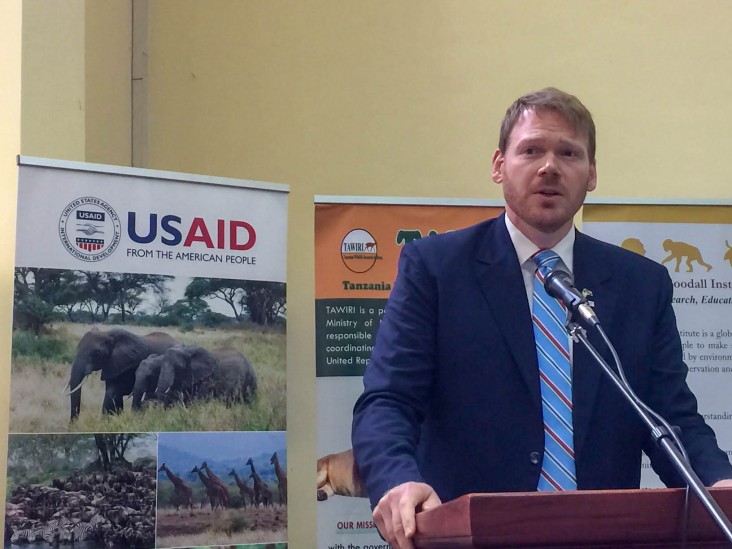Speeches Shim

Good morning,
On behalf of the U.S. Government, I am delighted to be here. I would first like to say “Hongereni sana” to the Minister and his team for the commitment that has resulted in the National Chimpanzee Conservation Action Plan for Tanzania.
This plan is truly a landmark achievement for Tanzania, and a critical step to conserving endangered chimpanzee populations in Tanzania.
I would also like to thank all of the contributors who made this plan possible, in particular the Tanzania Wildlife Research Institute (TAWIRI) and the Jane Goodall Institute who spearheaded this process. This was truly a collaborative effort and the U.S. government, through the U.S. Agency for International Development, is proud to have played a part.
Globally, chimpanzee populations have declined dramatically. At the turn of the 20th century, there may have been as many as two million chimpanzees. Today, no more than 300,000 – and possibly as few as 150,000 – are estimated to remain.
As a Party to the Convention on International Trade in Endangered Species of Wild Fauna and Flora (CITES) and under the Endangered Species Act of 1973, the United States shares responsibility for supporting conservation, both domestically and abroad.
Tanzania’s chimpanzee populations represent the easternmost and southernmost limit of chimpanzee distribution in Africa. These populations are not only an important part of Tanzania’s natural heritage; they were also central to some of the most influential scientific moments of the 20th century.
It was in Tanzania, in Gombe National Park, that Dr. Jane Goodall changed how the global scientific community approached studies of animal behavior and observed for the first time that humans were not the only animals that could make and use tools.
However, in the years that have passed since those discoveries were made, threats to chimpanzees have significantly increased.
Tanzania has one of the highest deforestation rates in Africa (over 400,000 hectares each year). This is especially concerning as the majority of chimpanzees are found outside of protected areas.
As these areas are increasing fragmented, the chimpanzee populations are at greater risk of isolation and the viability of the populations decreases. Furthermore, close proximity between where chimpanzees and humans live brings additional risks of human-wildlife conflict and disease transmission between us.
The National Chimpanzee Conservation Action Plan lays out actions to address these threats. It highlights the need to urgently focus on the approximately 700-1300 chimpanzees outside the national parks.
It is only by ensuring that chimpanzee populations are connected to each other and able to move safely throughout their habitat, that chimpanzee populations can persist in the long-term.
On behalf of the U.S. Government, we are proud to continue to support the Ministry of Natural Resources and Tourism to conserve chimpanzees and other endangered wildlife.
It has been an honor and a pleasure for the U.S. government, through the USAID PROTECT activity, to support the Ministry in the development of this plan to protect chimpanzees.
We look forward to discussing further with the Minister and his team how USAID can best support the implementation of this action plan.
Asenteni sana kwa kunisikiliza.

Comment
Make a general inquiry or suggest an improvement.